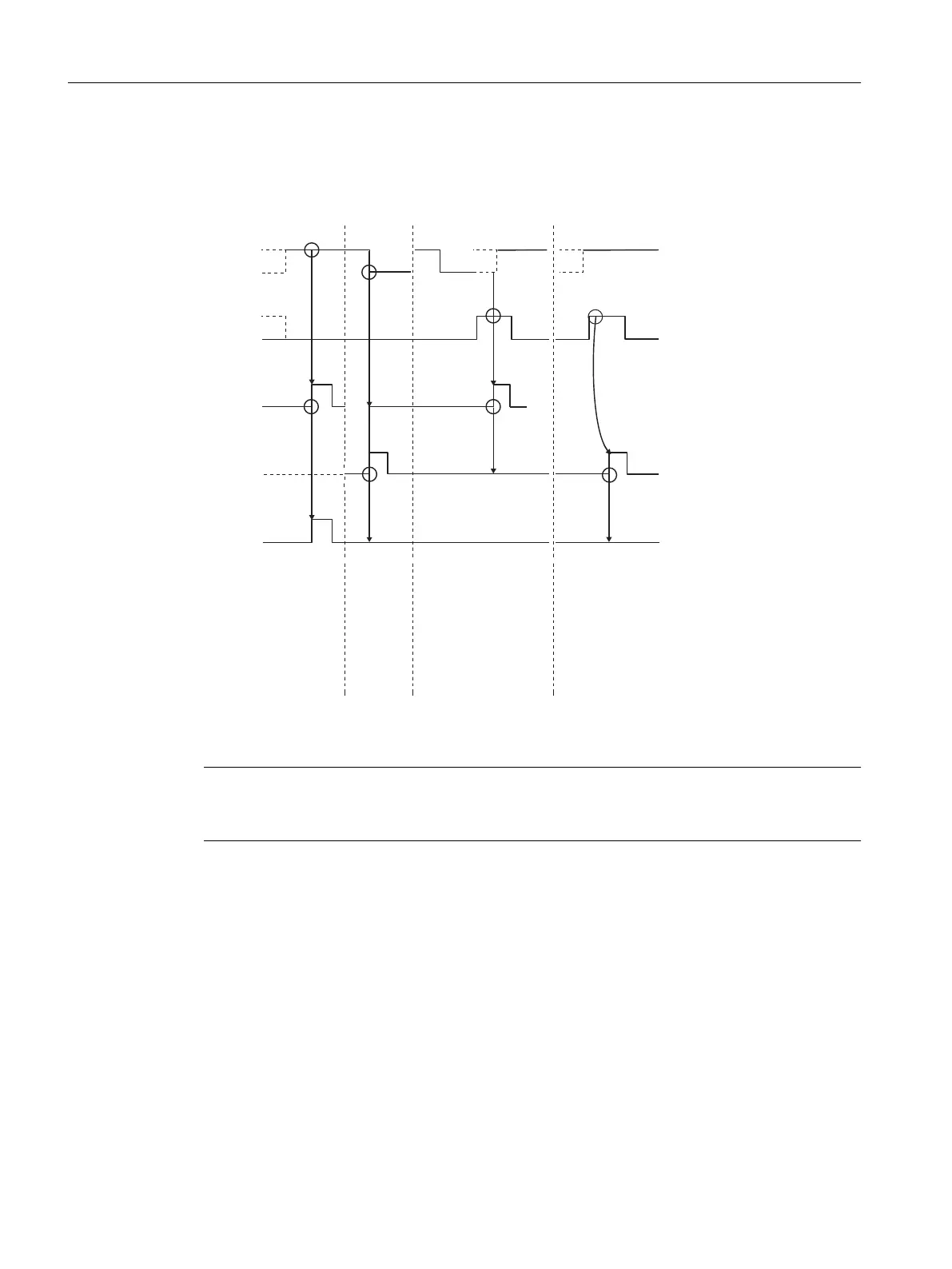Time Sequence Chart for the RECV_440 FB
The gure below illustrates the behavior of the NDR, LEN and ERROR parameters, depending on
how the EN_R and R inputs are wired.
1'5
(1B5
5
(5525
(QDEOHUHFHLYH
&RPSOHWLRQZLWKRXWHUURUV
5HFHLYLQJ
7HUPLQDWLRQZLWKHUURUV
5HFHLYLQJLVVZLWFKHGRII
1RWUHFHLYLQJ
5(6(7
&RPSOHWLRQZLWKRXWHUURUV
5HFHLYLQJ
7HUPLQDWLRQZLWKHUURUV
/(1
OHQJWK
Figure 6-2 Time Sequence Chart for the 9 RECV_440 FB
Note
The EN_R must be set to static "1". During the receive request, the EN_R parameter must be
supplied with RLO "1" (result of logic operation).
6.3.3 Deleting the Receive Buer (11 "RES_RECV" FB)
The RES_RECV FB deletes the entire receive buer of the CP 440. All the stored message frames
are discarded. A message frame coming in at the same time as the RES_RECV FB call is saved.
The FB is activated by a positive edge at the REQ input. The job can run over several calls
(program cycles).
The FB RES_RECV function block can be called in the cycle when the signal state at the R
parameter input is "1". This terminates deletion and sets the RES_RECV FB back to its initial state.
Communication via Function Blocks
6.3 Using the Function Blocks
Point-to-point connection CP 440 Installation and Parameter Assignment
82 Equipment Manual, 03/2022, A5E00057742-AE

